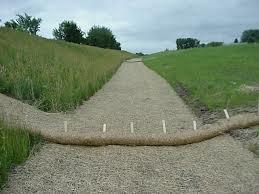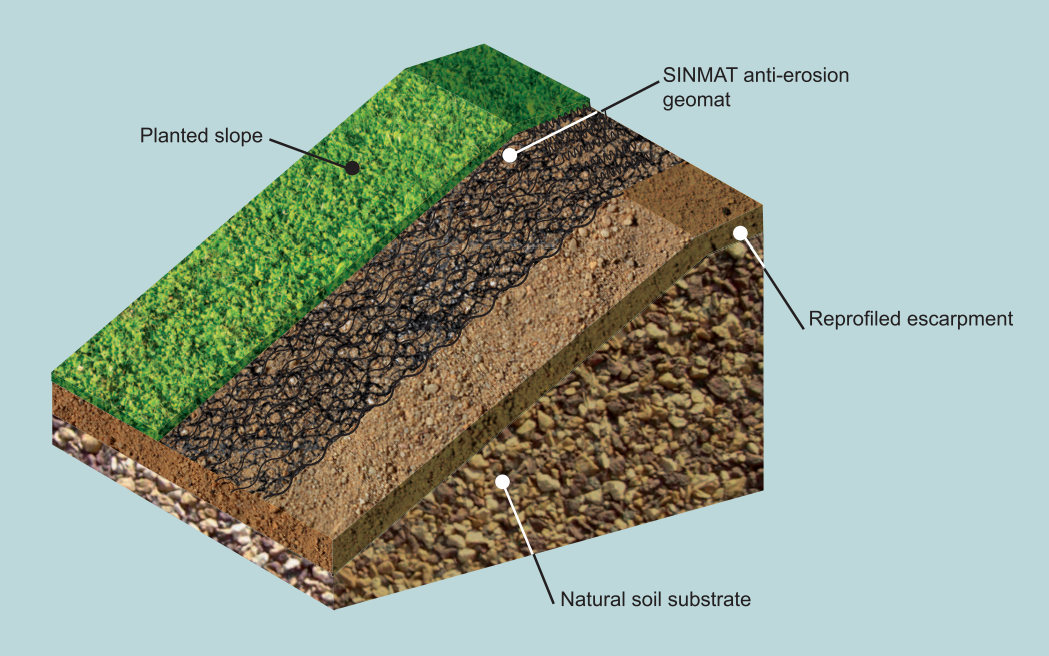Hydroseeding Solutions: A Greener Strategy to Land Management
Wiki Article
Understanding the Duty of Greenery in Disintegration Control
Do you intend to understand just how greenery can play a crucial function in controlling disintegration? Look no further! In this post, we will check out the importance of plants in erosion control and review the various kinds of plants that work in protecting against soil disintegration. You will likewise learn more about the methods in which vegetation assists in disintegration prevention and find the most effective methods for applying and maintaining greenery techniques for erosion control. Let's look into the world of plants and its effect on erosion control!
The Importance of Plants in Erosion Control
The value of vegetation in erosion control can not be overstated. When it involves preventing dirt disintegration, vegetation plays a vital duty. It acts as a protective cover, stopping the dirt from being washed away by rainwater or blown away by wind. Without plant life, the bare dirt is exposed to the pressures of nature, resulting in disintegration and the loss of beneficial topsoil.Vegetation, such as lawns, trees, and bushes, aids to maintain the dirt - Memphis Erosion Control Solutions hydroseeding. Their origins penetrate deep into the ground, creating a network that holds the dirt fragments with each other. This binding impact decreases the possibility of soil disintegration, also during solid winds or heavy rainfall
Not just does plants serve as a physical barrier versus disintegration, however it also helps to reduce the flow of water. The leaves, stems, and branches of plants intercept raindrops, reducing their influence on the dirt surface. This allows the water to penetrate into the soil extra gradually, providing it a better chance to be soaked up and minimizing the danger of erosion.
Along with these physical advantages, greenery also adds to disintegration control via its capacity to soak up excess water. The origins of plants occupy water from the dirt, functioning as natural sponges. This helps to manage the water balance, preventing waterlogging and minimizing the risk of dirt erosion.
Kinds Of Plants for Effective Erosion Control
Various sorts of plants are vital for efficient disintegration control. You have a variety of options to select from when it comes to avoiding soil disintegration. Yards, such as Bermuda turf and fescue, are superb options for disintegration control. Their thick root systems assist maintain the soil and avoid it from removing. Shrubs, like juniper and rosemary, likewise play a substantial role in erosion control. Their deep origins hold the dirt in position and supply useful security versus disintegration. Trees, such as oak and pine, are an additional vital part of disintegration control. Their comprehensive origin systems assist bind the dirt with each other, lowering the danger of disintegration. Along with these bigger plants, ground cover plants like clover and ivy can also work in disintegration control. They spread out quickly and provide a protective layer over the soil, stopping disintegration. By making use of a mix of these different sorts of plant life, you can develop a durable and effective erosion control system that will help maintain the integrity of your soil. Memphis Erosion Control Solutions Memphis TN.
Just How Vegetation Helps Stop Soil Erosion
Using a selection of greenery choices can properly prevent soil erosion, helping you maintain the integrity of your soil. By planting trees, shrubs, and ground cover, you create a natural barrier that protects the dirt from the destructive forces of wind and water. Tree origins, for instance, anchor the soil and hold it in place, preventing erosion triggered by solid winds or heavy rains. The dense vegetation of hedges and ground cover works as a safety layer, minimizing the effect of raindrops on the soil surface and reducing down water drainage. This enables water to infiltrate the soil, restoring groundwater and decreasing disintegration. Furthermore, the roots of vegetation aid to boost soil structure by damaging up compressed soil and enhancing its capacity to take in and keep water. By including a range of vegetation alternatives, you can produce a durable and diverse ecosystem that not just avoids dirt disintegration but additionally supports the development of helpful organisms and advertises general soil health and wellness. So, whether you have a garden, a yard, or see this site a big item of land, using vegetation is a straightforward and efficient method to keep the stability of your dirt and avoid disintegration.Implementing Greenery Methods for Erosion Control
Carrying out plant life strategies for disintegration control can be a cost-effective and environmentally-friendly service for preserving soil integrity. By utilizing greenery tactically, you can support slopes, decrease surface runoff, and prevent erosion from occurring in the first area. One reliable strategy is the investigate this site usage of cover plants, such as turfs or vegetables, which can protect the dirt from disintegration by supplying ground cover and minimizing the effect of raindrops. Another technique is the facility of vegetative barriers along water bodies, which can take in excess water, filter out debris, and reduce down water flow. You can also make use of real-time fascines, which are bundles of live cuttings that can be tightly woven with each other to develop a barrier versus streaming water. These fascines can help stabilize streambanks and lower disintegration. In addition, planting hedges and trees can assist in erosion control, as their roots bind the soil with each other, developing a stable and solid framework. In general, implementing plant life methods for erosion control is a green and functional measure that can aid protect dirt high quality while additionally offering countless other advantages for the atmosphere.
Best Practices for Keeping Vegetation in Disintegration Control Measures
To efficiently maintain plants in erosion control actions, you must frequently monitor the wellness of the plants and quickly resolve any type of issues that develop. Be proactive in preserving a weed-free environment by consistently removing any kind of unwanted plants that may contend with the disintegration control plants. By complying with these ideal practices, you can properly maintain plants in erosion control steps and optimize their effectiveness in stopping disintegration.
her comment is here
Verdict
So, currently you recognize the crucial role that greenery plays in erosion control. By choosing the right types of plants and implementing effective techniques, you can prevent dirt disintegration and shield your land. Bear in mind to consistently keep your plants to guarantee its ongoing performance. By complying with these best techniques, you can efficiently control disintegration and preserve a healthy and balanced environment. Maintain the great work!In this write-up, we will explore the relevance of plants in erosion control and review the different types of plant life that are efficient in avoiding soil disintegration. You will certainly also find out about the means in which plants helps in disintegration prevention and find the best techniques for executing and maintaining plants techniques for disintegration control.Using a range of vegetation choices can effectively stop dirt erosion, aiding you maintain the stability of your dirt. By integrating a selection of vegetation choices, you can create a resilient and diverse ecological community that not only stops dirt erosion however additionally supports the growth of valuable organisms and promotes total dirt health. By complying with these ideal practices, you can successfully keep vegetation in erosion control procedures and optimize their effectiveness in avoiding erosion.
Report this wiki page